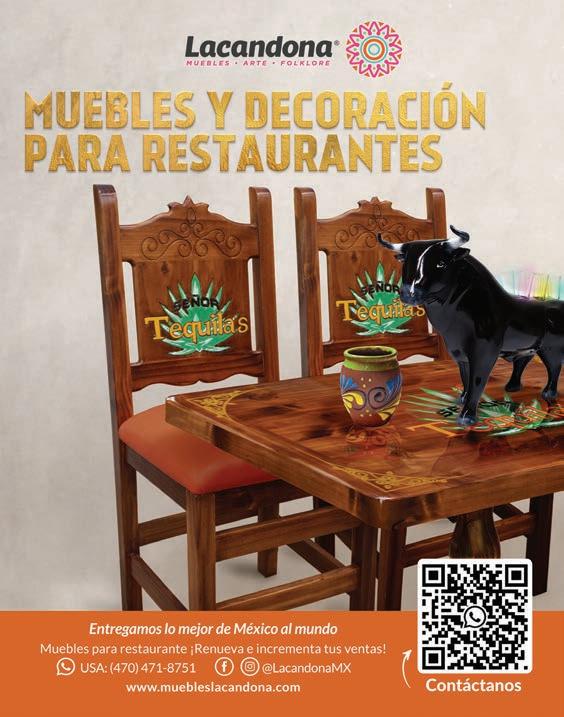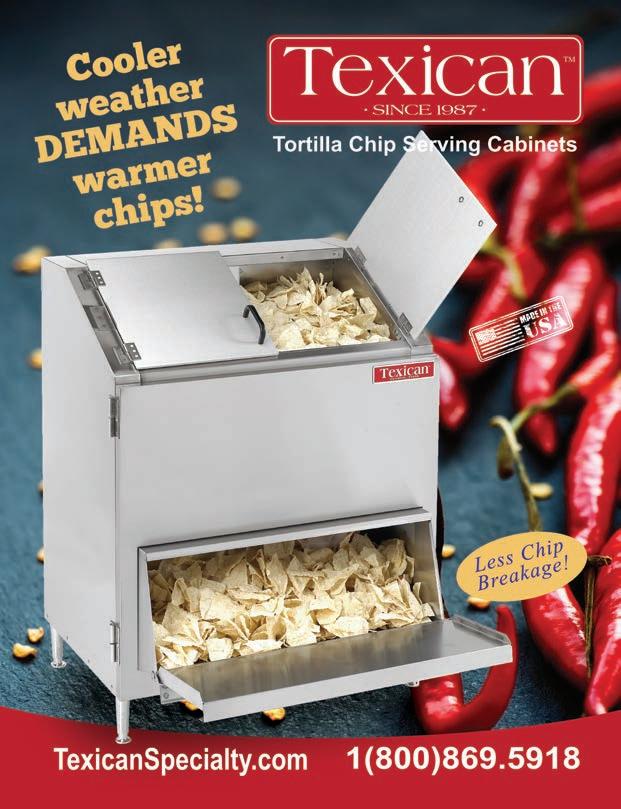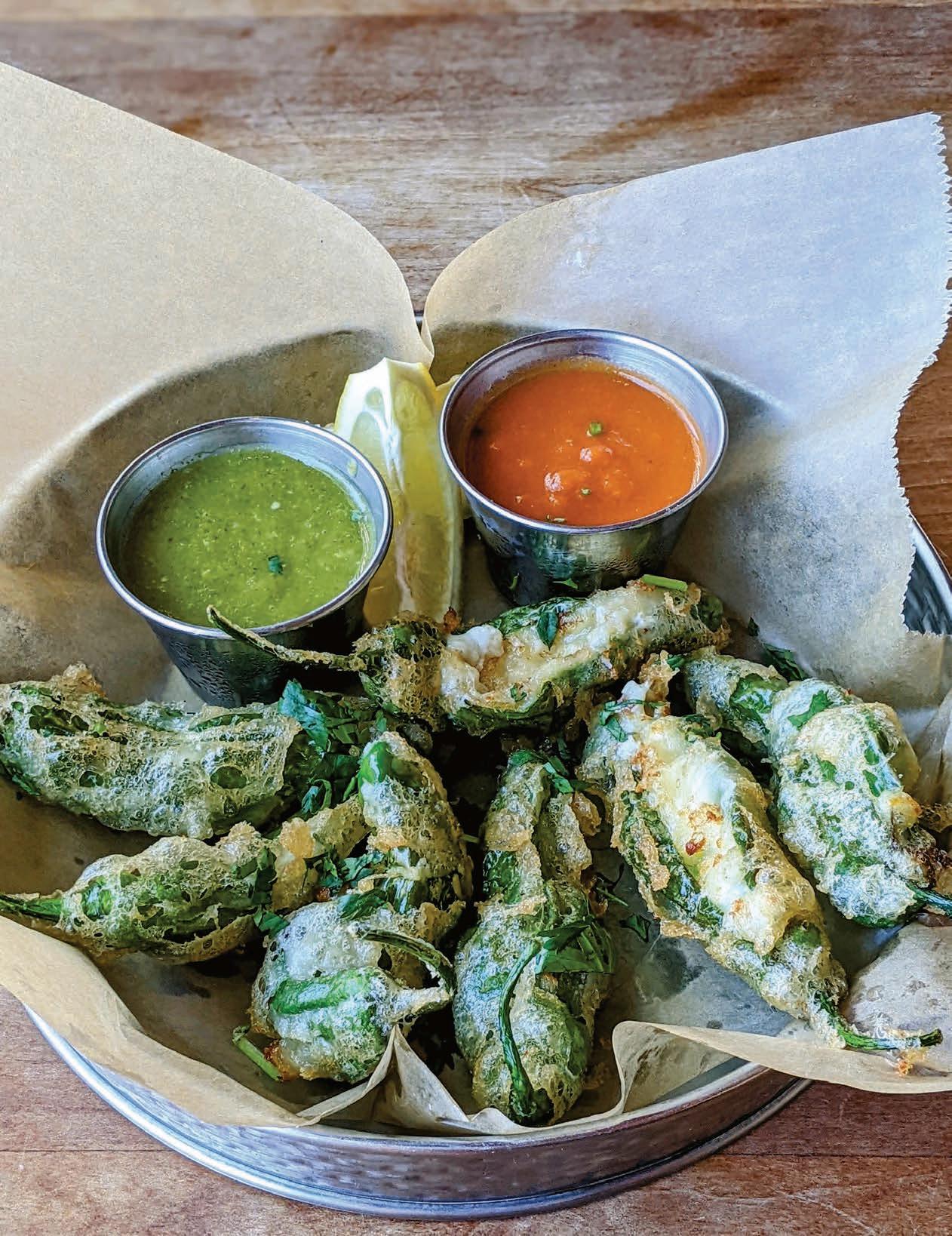
11 minute read
COVER STORY — Appetizer Appeal
Appetizer How innovative starters can deliver bottom-line benefits Appeal
Socalo’s Chilitos Rellenos
BY ANNELISE KELLY Appetizers have come a long way on the classic Mexican restaurant menu. While guacamole, nachos, and chips and salsa will never go out of style, many of today’s restaurant guests crave more diverse dishes to kick off their dining experience.
Operators have many reasons to improve their appetizer options. It’s an opportunity to strut their culinary stuff, intrigue their guests, and improve their bottom line. Here’s how to get the most from your appetizer program.
DEFINING THE CATEGORY
Appetizers. Starters. Small plates. Antojitos.
Whatever they’re called on restaurant menus, they all serve the same purpose: to entice customers and boost check averages at the beginning of a meal.
“Antojitos — the translation is little desires,” says Dudley Nieto, executive chef at Fat Rosie’s Taco & Tequila Bar, a chain with four Chicago area locations. “It means something you really, really want to have — that urgency, that craving. It’s always a small plate or a bite in Mexico. Especially in the markets and in the streets, we have those little desires, those antojitos.”
“Appetizers and starters are pretty much the same thing,” explains Greg Denton of Ox, an upscale Argentine steakhouse in Portland, Oregon, where he is chef and co-owner with his wife, Gabrielle Denton, who observes that Spanish-focused restaurants may follow the tapas model of assorted small plates composing a meal.
“There’s [also] kind of a new category, snacks, which means an amuse-bouche or something that’s very small,” he adds.
Where do side dishes fit in?
Nieto says side dishes are intended to complement a main course. The same is true at Ox.
“They’re designed to elevate or balance the other menu items that you’ll be enjoying at the same time,” Denton says.
WHAT’S POPULAR, WHAT’S TRENDING
We turned to Technomic, a foodservice management consulting company, for some statistics on appetizers in Mexican restau“You just want enough so you can have the taste of it. Instead of a big plate, you have a small plate, so now you can play with flavors, textures and colors. That’s why it’s important to have the small dishes. It’s like tapas-style, right? You can share four or five different dishes, and it will be fun.”
– CHEF DUDLEY NIETO, Fat Rosie’s
Ox’s Clam Chowder with Smoked Bone Marrow Fat Rosie’s Ceviche
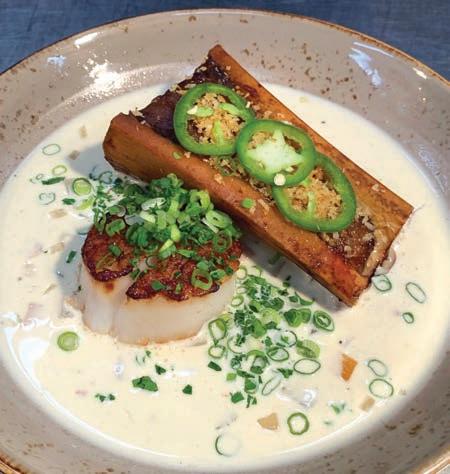
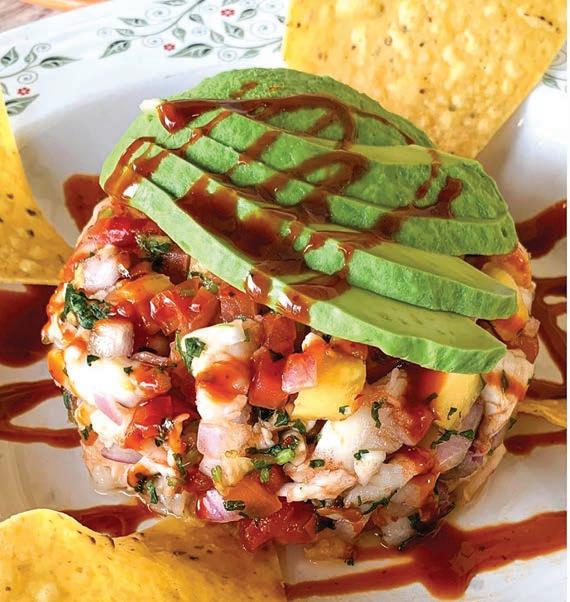
Start saving now! High-efficiency equipment could help you save money by reducing your energy usage

With the California Foodservice Instant Rebates Program you could save on high-efficiency equipment for your business. Choose from a variety of qualifying products and get valuable Instant Rebates as a discount on your invoice – no paperwork, no waiting. It’s easy – here’s how:
Find a participating dealer at www.caenergywise.com/instant-rebates
Choose qualifying product
Receive an Instant Rebate on your invoice
It’s Easy
no paperwork required
Eligibility
Non-residential customers of SoCalGas®, Pacific Gas and Electric Company (PG&E®), Southern California Edison Company (SCE®) and San Diego Gas & Electric Company (SDG&E®) are eligible to receive Instant Rebates. Equipment must be installed in a non-residential location that receives natural gas and/or electricity service from one of the above utilities. Valuable rebates are available on a range of natural gas and electric equipment for your business. For a full list of qualifying equipment, download the Qualifying Products List at: www.caenergywise.com/instant-rebates
Energy Savings with High Efficiency
Major cooking appliances account for almost 35% of the average restaurant’s energy expenditures. Efficient equipment could help decrease your energy use by as much as 75% compared to standard efficiency equipment.1 High efficiency equipment uses less energy and water, which could reduce your utility bills.
Qualifying Equipment
Many common makes and models of commercial foodservice equipment qualify for the California Foodservice Instant Rebates Program. Qualifying equipment must be installed at a non-residential site that receives natural gas and/or electricity service from SoCalGas, PG&E, SCE, or SDG&E. The fuel type of the equipment being purchased must match the fuel type of your non-residential account with one of the above utilities.
Natural Gas
Electric
Dual Fuel Rack Oven
Conveyor Oven Combination Oven
Convection Oven
Fryer Steamer
Underfired Broiler Griddle
Deck Oven
Combination Oven
Convection Oven
Fryer Hand-Wrap Machine Steamer
Hot Food Holding Cabinet Glass or Solid Door Refrigerator Refrigerated Chef Base Glass or Solid Door Freezer
Ice Machine
Ice Making Head Remote Condensing Unit Ultra-Low Temperature Freezer Conveyor Toaster Dishwasher
Conveyor Broiler Demand Controlled Kitchen Ventilation $200 per foot $2,500 per unit $1,400 per cavity $1,500 - $3,0001 per cavity $700 per cavity $900 - $1,4002 per vat $2,000 per cavity $650 per foot $200 per foot $1,500 per cavity $1,500 - $3,0001 per cavity $750 per cavity $650 per vat $125 per unit $2,000 per cavity $200 - $7503 per unit $70 - $1003 per unit $250 - $5003 per unit $30 - $3503 per unit $70 - $1004 per unit $100 - $2504 per unit $250 per unit $1,200 per unit $600 per unit $50 - $6505 per unit $2,000 - $4,0003 per unit $700 per HP
*For the full and most current list of qualifying equipment, download the California Foodservice Instant Rebates Qualifying Products list at www.caenergywise.com/instant-rebates.

“I can buy something in a larger format that will cost less money and I can divide it up. You’re not just giving one big piece of fish for an entree, but you’re giving a small piece of cured fish with other garnishes so you’re able to extend it a little bit further.” – CHEF GREG DENTON, Ox
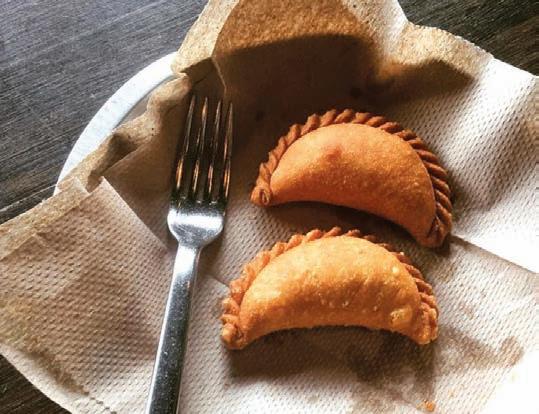
rants. The average price of an appetizer at Mexican restaurants is $7.79, according to Technomic’s Ignite menu data.
The top five appetizers include that ubiquitous guacamole, along with cheesy nachos with or without chicken or beef. Tacos/taquitos also appear in the top five, along with seafood soup and other specialty soups. Ceviche is on the rise, having increased in popularity 9 percent over the past year.
Further Ignite menu data, surveying restaurants of all categories, reveals that bread appetizers are number one, ordered by over 16 percent of guests, closely followed by wings (13.9 percent) and filled appetizers (12 percent). On Latin menus, taquitos, tacos and empanadas lead the filled appetizer category.
Nieto’s experience reflects the data. His ceviche (tropically crafted with lime-marinated shrimp, tomato, pineapple, mango, red onion, cilantro and chipotle), and empanadas (described as “beefy-cheesy-salsa-stuffed turnovers” on Fat Rosie’s Instagram post) are among the restaurant’s most popular appetizer offerings.
“The one that everybody loves is the ceviche because of the freshness, because of the habanero flavor,” Nieto notes.
The menu at Ox also taps two of the trends the Technomic report highlights: popular appetizer offerings include empanadas and the restaurant’s celebrated clam chowder served with a smoked marrow bone.
Nieto’s Coctel de Camaron y Pulpo is another popular appetizer featuring seafood. Hoping to build on its success, the chef says he plans to incorporate more seafood and Ensenada influences onto his new menu.
Fat Rosie’s also offers two combination appetizers.
How to Upsell Appetizers
Appetizers represent big benefits to both guests and restaurant operators. Guests get to experiment with a diverse range of tastes and textures and have an edible distraction while waiting for their main course to arrive. Operators increase their per-cover receipts, allowing them to get the most from each table and each seating.
The first strategy is crafting an appetizer menu that guests can’t resist, featuring reliable favorites and intriguing dishes and combinations.
The next step is supporting your appetizer program by training servers in the art of the appetizer upsell.
Some simple techniques include training wait staff to engage with confidence, assuming the sale. Instead of saying, “Can I get you an appetizer?” try phrasing such as:
“Have you checked out our appetizer menu? Which can I bring you?”
“Would you like to hear about our appetizers?”
“Our guacamole/jalapeno poppers/taquitos go so well with our margaritas.”
“Our ceviche is incredibly popular.”
“The servers need to upgrade to be salespeople,” says Dudley Nieto, executive chef of Fat Rosie’s Taco & Tequila Bar, a chain with four Chicago area locations. Training should include tasting the food during pre-shift meetings, along with helping servers perfect their wording. “Finding a good story behind it is the best way to sell anything. Not just an appetizer, but anything.” He says the server’s role is to “guide the guests to a whole new experience, which starts with an appetizer.
“When the server tells you that piece of pork for cochinita pibil was marinated with achiote, it cooked all night covered in a banana leaf, and now you’re going have it in a tostada filled with black beans, and those black beans are cooked with toasted avocado leaves – now you have the story, you’re eating history and culture,” says Nieto. “From the moment you taste it, you want to continue eating, you want to go back and try that same appetizer, because the server explained its whole story.”

Sopes surtidos is composed of four small masa boats, each with a different filling so customers can sample assorted flavors such as chicken with mole sauce, poblano rajas, and beef queso dip. The other appetizer combo rounds up favorites including guacamole, ceviche tostadas, sopes with chicken mole, and crispy quesadillas.
In terms of trends, Nieto notes that customers are embracing vegan and vegetarian dishes, with seasonal vegetables often appearing as small plates and small appetizers. “Cauliflower is coming on strong as an appetizer, believe it or not,” he says. Nieto also notes that huitlacoche, grasshoppers, and guacamole with spicy and savory toppings such as chicharrones are trending appetizers in the Mexican restaurant arena.
Vegetarian dishes are becoming an important part of the menu at Socalo — the California canteen and Mexican pub from award-winning chef/owners Susan Feniger and Mary Sue Miliken in Santa Monica. Executive Chef Gio Lopez says the idea for his Chilitos Rellenos was born when he was looking for a new vegetarian item to add to the seasonal menu.
“It’s actually adapted from a dish we used to make at Border Grill Santa Monica. I started testing different ways to make a more modern chile relleno that could have more of a wow factor when you bite into it,” Lopez explains, “I had played around with shishitos in another appetizer dish and decided they would be perfect for this experiment. So, I stuffed them with our house cheese blend and tested several different batters before deciding that a tempura style batter is the best option.”
The result? “Chillitos Rellenos are one of our most poular appetizer dishes at the moment,” he says.
SHARING ADVENTURE ON A PLATE
There’s little doubt that diners have become more adventurous when it comes to experimenting with cuisine.
Denton reports that he observes that at Ox.
“I’m seeing that offal dishes and some more adventurous dishes are being sold a little bit more. I think people are being a little more open-minded when it comes to some
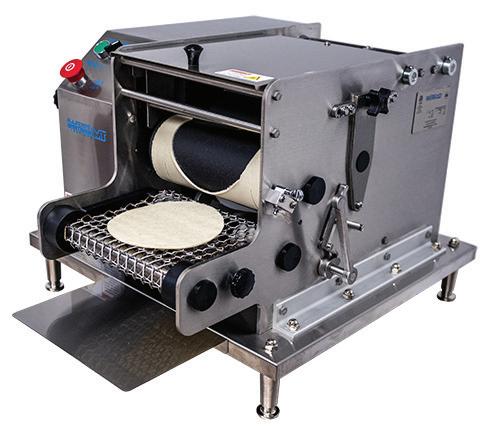
foods — maybe that has to do with eating comfort foods when everybody was locked down, and now they want to venture out a little bit from that norm.”
Ox’s tripe and octopus and grilled sweetbreads and tongue are examples of “kind of more adventurous dishes on our menu,” Denton says. “We’re seeing that those are selling quite a bit.”
He says one role appetizers play is to give people an avenue to try smaller quantities of more adventurous items, enabling guests to sample and share something that might be new or challenging to their palates.
Nieto emphasizes that guests benefit from sharing appetizers with friends and thereby accessing more variety. “You just want enough so you can have the taste of it. Instead of a big plate, you have a small plate, so now you can play with flavors, textures and colors. That’s why it’s important to have the small dishes. It’s like tapas-style, right? You can share four or five different dishes, and it will be fun.”
He also notes that small plates offer an opportunity to introduce guests to distinctive dishes from areas such Yucatan, Puebla and Oaxaca, capitalizing on regional Mexican cuisines, which he says are trending.
FOLLOW THE MONEY
Appetizers can benefit operators’ bottom line in a few ways.
Denton gets the most from his ingredients and minimizes waste by strategically introducing certain appetizers. “I can buy something in a larger format that will cost less money and I can divide it up. You’re not just giving one big piece of fish for an entree, but you’re giving a small piece of cured fish with other garnishes so you’re able to extend it a little bit further. Anything that you don’t use, you’re putting in the garbage, you’re basically wasting money. Like when we get a whole halibut, we take the tail and the collar, and we’ll sell those as a deep-fried item. It’s nice and tender and crispy with a spicy ponzu — very appealing and a reasonable price point.”
Between inviting customers to try something different and even adventurous, tempting guests to share and broaden their tasting experience, and helping to bring balance to a menu, appetizers play a critical role in every Latin restaurant. Hone your appetizer menu and make ordering an appetizer irresistible to your guests and you’ll see your bottom line benefit.
